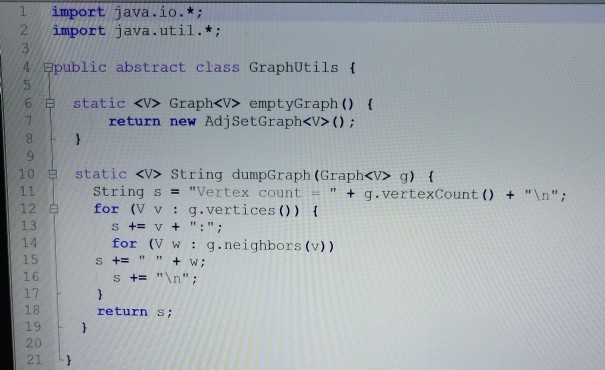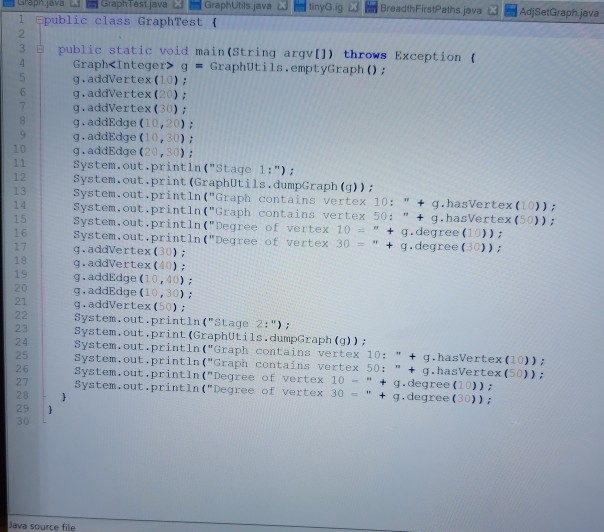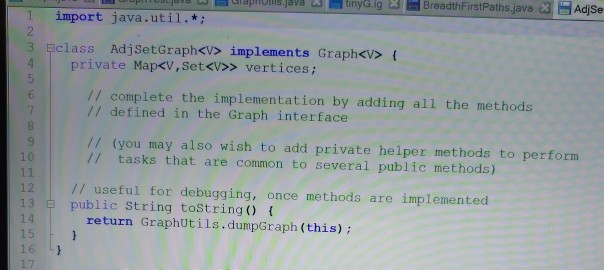Answered step by step
Verified Expert Solution
Question
1 Approved Answer
l import java.io.*; 2 import java.util.*; 4/ Epublic abstract class GraphUtils ( 6 static Graph empty Graph ) return new AdjSetGraph ); String dumpGraph (Graph




l import java.io.*; 2 import java.util.*; 4/ Epublic abstract class GraphUtils ( 6 static
Step by Step Solution
There are 3 Steps involved in it
Step: 1

Get Instant Access to Expert-Tailored Solutions
See step-by-step solutions with expert insights and AI powered tools for academic success
Step: 2

Step: 3

Ace Your Homework with AI
Get the answers you need in no time with our AI-driven, step-by-step assistance
Get Started


